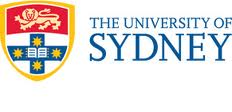Teaching
Lecture courses
- MATH4411: Applied Computational Mathematics (Semester 1, 2025)
- MATH3888: Projects in Mathematics (Semester 2, 2024)
- MATH1933: Special Studies Program B (Semester 2, 2023)
- MATH3888: Projects in Mathematics (Semester 2, 2023)
- MATH4411: Applied Computational Mathematics (Semester 1, 2023)
- MATH3888: Projects in Mathematics (Semester 2, 2022)
- MATH4411: Applied Computational Mathematics (Semester 1, 2022)
- MATH3888: Projects in Mathematics (Semester 2, 2021)
- MATH4411: Applied Computational Mathematics (Semester 1, 2021)
- MATH3888: Projects in Mathematics (Semester 2, 2020)
- MATH2070/2970: Optimization and Financial Mathematics (Semester 2, 2019)
- MATHAMH1: Computational Projects in Applied Mathematics (Semester 1, 2019)
- MATH3974: Fluid Dynamics (Semester 1, 2019)
- MATH2070/2970: Optimization and Financial Mathematics (Semester 2, 2018)
- MATHAMH1: Computational Projects in Applied Mathematics (Semester 1, 2018)
- MATH3974: Fluid Dynamics (Semester 1, 2018)
- MATH2070/2970: Optimization and Financial Mathematics (Semester 2, 2017)
- MATH3974: Fluid Dynamics (Semester 1, 2017)
- MATH3974: Fluid Dynamics (Semester 1, 2016)
- MATH1907 Mathematics (Special Studies Program) (Semester 2, 2015)
- MATH2070/2970: Optimization and Financial Mathematics (Semester 2, 2015)
- MATH3974: Fluid Dynamics (Semester 1, 2013)
- AHM6: Macroscopic dynamics in complex systems (Semester 2, 2012)
Summer and Graduate schools
Possible undergraduate or honours projects
Please come and talk to me!

